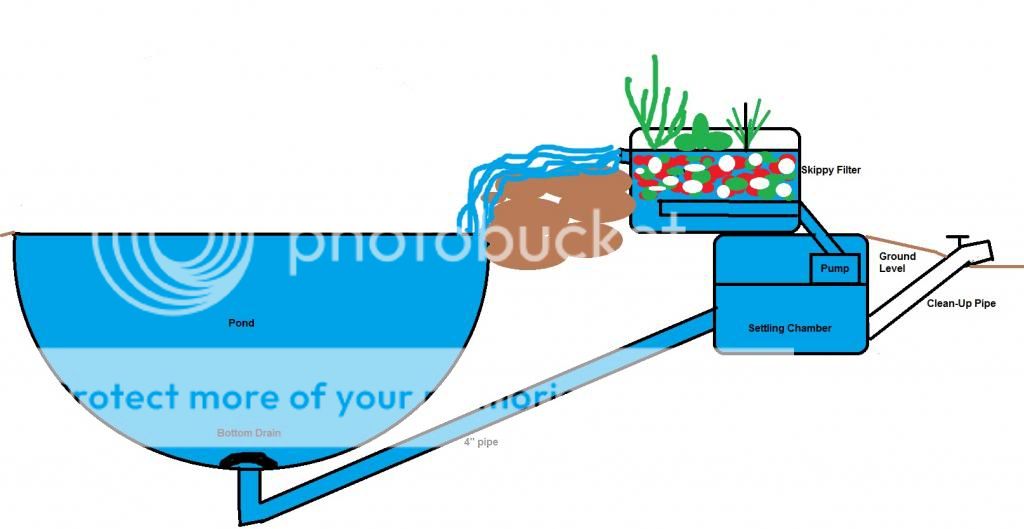Hello everyone!
Since we decided to stay in our house I have been thinking about re-doing my pond. Not any time really soon. First I want to install a small pond on the other side of the patio. Once it is up and running it will provide a temporary place for my kio so I can re-do the larger pond. The smaller pond wont go in till next year, then the re-do maybe the year after that, so I am just planning ahead.
The main thing I want to do with my big pond is remove the shelves, install a bottom drain and go deeper. It is currently 21' x 17' x 40" deep.
Right now I have 2 pumps in the pump elevated from the bottom feeding two skippy filters that feed a small bog then down the falls back into the pond. I suspect I have about 6000 GPH moving all the time.
I understand the install of the bottom drain. But the plumbing from there is what has me confused. I am no plumber and can't really wrap my head around any of it. I am not sure how the water flows up-hill etc. I am not sure where I should place my pumps and how to clean out the settling tank.
I have spent a long time googling it and can not find very detailed information on the pump placement etc. So I drew a little picture of what appears to be the way to do it. But I could be completely wrong.
Here is the picture and some of my questions.

1. Does the pump go in the settling chamber?
2. Can the clean out pipe go up at an angle like that or does it need to flow down?
3. How many bottom drains do I need for the new pond (approximately 7000 - 8000 gallon pond)
4. In general what is wrong or right about this design, what would you do differently. Keeping in mind I want as little plumbing involved as possible to avoid future issues with leaking.
Thank you everyone for all your help as always!
Since we decided to stay in our house I have been thinking about re-doing my pond. Not any time really soon. First I want to install a small pond on the other side of the patio. Once it is up and running it will provide a temporary place for my kio so I can re-do the larger pond. The smaller pond wont go in till next year, then the re-do maybe the year after that, so I am just planning ahead.
The main thing I want to do with my big pond is remove the shelves, install a bottom drain and go deeper. It is currently 21' x 17' x 40" deep.
Right now I have 2 pumps in the pump elevated from the bottom feeding two skippy filters that feed a small bog then down the falls back into the pond. I suspect I have about 6000 GPH moving all the time.
I understand the install of the bottom drain. But the plumbing from there is what has me confused. I am no plumber and can't really wrap my head around any of it. I am not sure how the water flows up-hill etc. I am not sure where I should place my pumps and how to clean out the settling tank.
I have spent a long time googling it and can not find very detailed information on the pump placement etc. So I drew a little picture of what appears to be the way to do it. But I could be completely wrong.
Here is the picture and some of my questions.

1. Does the pump go in the settling chamber?
2. Can the clean out pipe go up at an angle like that or does it need to flow down?
3. How many bottom drains do I need for the new pond (approximately 7000 - 8000 gallon pond)
4. In general what is wrong or right about this design, what would you do differently. Keeping in mind I want as little plumbing involved as possible to avoid future issues with leaking.
Thank you everyone for all your help as always!
